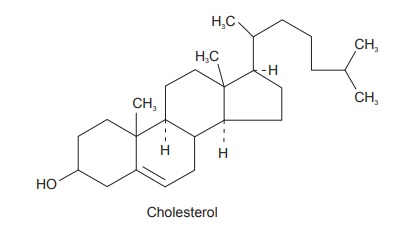Lanolin
| Home | | Pharmacognosy |Chapter: Pharmacognosy and Phytochemistry : Drugs Containing Lipids
Lanolin is the fat-like purified secretion of the sebaceous glands which is deposited into the wool fibres of sheep, Ovis aries Linn., belonging to family Bovidae.
LANOLIN
Synonyms
Wool fat; Oesipos; Agnin; Alapurin; Anhydrous lanolin; Adeps
lanae; Laniol.
Biological Source
Lanolin is the fat-like purified secretion of the sebaceous
glands which is deposited into the wool fibres of sheep, Ovis aries Linn., belonging to family Bovidae.
Preparation
Wool is cut and washed with a soap or alkali. An emulsion of
wool fat, called as wool grease, takes place in water. Raw lanolin is separated
by cracking the emulsion with sulphuric acid. Wool grease floats on the upper
layer and fatty acids are dissolved in the lower layer. Lanolin is purified by
treating with sodium peroxide and bleaching with reagents.
Characteristics
Lanolin is a yellowish white, tenacious, unctuous mass;
odour is slight and characteristic. Practically, it is insoluble in water, but
soluble in chloroform or ether with the separation of the water. It melts in
between 34 and 40°C. On heating it forms two layers in the beginning,
continuous heating removes water. Lanolin is not saponified by an aqueous
alkali. However, saponification takes place with alcoholic solution of alkali.
Anhydrous lanolin is a yellowish tenacious, semisolid fat
with slight odour. Practically it is insoluble in water but mixes with about
twice its weight of water without separation. It is sparingly soluble in cold,
more in hot alcohol, freely soluble in benzene, chloroform, ether, carbon
disulphide, acetone, and petroleum ether.
Chemical Constituents
Lanolin is a complex mixture of esters and polyesters of 33
high molecular weight alcohols, and 36 fatty acids. The alcohols are of three
types; aliphatic alcohols, steroid alcohols, and triterpenoid alcohols. The
acids are also of three types: saturated nonhydroxylated acids, unsaturated
nonhydroxylated acids, and hydroxylated acids. Liquid lanolin is rich in low
molecular weight, branched aliphatic acids, and alcohols, whereas waxy lanolin
is rich in high molecular weight, straight-chain acids, and alcohols.
The chief constituents of lanolin are cholesterol,
iso-cholesterol, unsaturated monohydric alcohols of the formula C27H45OH,
both free and combined with lanoceric (C30H60O4),
lanopalmitic (C16H22O3), carnaubic, and other
fatty acids. Lanolin also contains esters of oleic and myristic acids,
aliphatic alcohols, such as cetyl, ceryl and carnaubyl alcohols, lanosterol,
and agnosterol.

Identification Tests
Dissolve 0.5 g of lanolin in chloroform, and to it add 1 ml
of acetic anhydride and two drops of sulphuric acid. A deep green colour is
produced, indicating the presence of cholesterol.
Uses
Lanolin is used as an emollient, as water absorbable
ointment base in many skin creams and cosmetic and for hoof dressing. Wool fat
is readily absorbed through skin and helps in increasing the absorption of
active ingredients incorporated in the ointment. However, it may act as an
allergenic contactant in hypersensitive persons.
